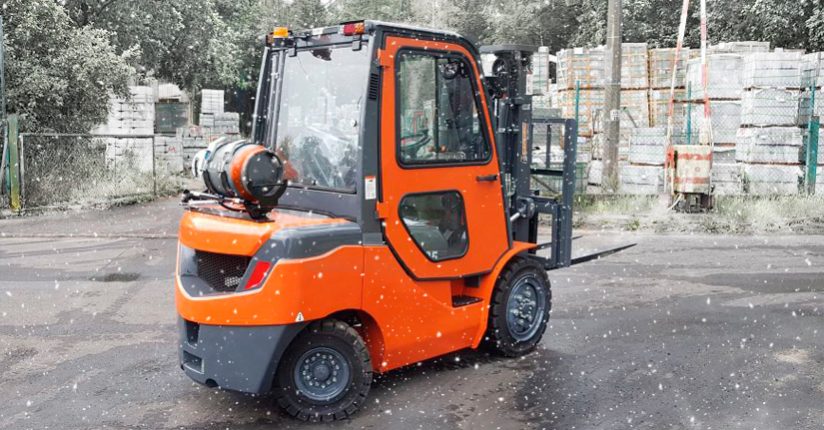Winter Forklift Maintenance
This is a guest post from Lucas Liftruck Services – a local Stärke dealer from the Niagara Region in Ontario, Canada. To see the original post, click here.
Winter is here! And, along with it, a host of potential issues for forklift owners and operators alike. Among the most concerning issues are increased fuel consumption, downtime and wear, all of which are directly influenced by cold weather conditions. As temperatures drop below freezing, fuel consumption tends to increases as engines struggle to start in colder weather (also known as cold starts) and must idle for longer periods of time before operation. Meanwhile, the colder weather also places additional strain on key components which suffer from a buildup of ice particles. To help you avoid the worst of the winter’s wrath, we’ve prepared a list of tips to help you prepare ahead of the winter snow:
Test Your Battery and Starter
Ironically, warm summer weather is the direct cause of many of the issues associated with batteries in the winter time as excessive summer temperatures accelerate corrosion and cause water to evaporate from the battery’s electrolyte. This, in turn, decreases battery capacity, longevity and its ability to start the engine. Since engines require more power from the battery to start during the winter and battery output drops by almost 50% at -18C, a damaged battery is bound to cause issues once temperatures stop dropping in the winter months. To avoid any issues, we recommend testing your batteries (and replacing if necessary) and checking all wires and terminals for corrosion. Read more on forklift battery maintenance.
Avoid Cold Starts
Cold weather presents a host of issues during start up for internal combustion engines, all of which combine to increase wear and fuel consumption. This is most apparent during start up, where the battery-related issues combine with thickened engine oil to increase fuel consumption. In fact, fuel efficiency plummets for up to 20 minutes following a cold start as engines utilize a richer fuel-to-air ratio to avoid stalling while it reaches operating temperatures. To alleviate these issues, we recommend that you use of a block heater and battery blanket, store your forklift inside, and use a thinner grade of oil during the winter months.
Avoid Short Run-Times
As mentioned above, engines tend to run a richer fuel to air ratio for the first 20+ minutes after a cold start to avoid stalling as the engine reaches operating temperature. During this time, it is possible for water vapor to accumulate in the engine oil and exhaust system as temperatures are insufficient to cause evaporation. To prevent the excessive buildup of water and/or ice in these systems, avoid operating your forklift for less than 30 minutes at a time during the winter months.
Proper Winter Maintenance
Unsurprisingly, a proper tune up both before and during winter goes a long way towards avoiding excessive damage and/or downtime as temperatures drop. Be sure that your mechanic checks the following systems to avoid cold weather issues: i) proper tire pressure and tread depth, ii) the operation of the ignition switch, starter and glow plugs, iii) coolant and lubrication levels, and iv) change wipers, seals, and lubricants (if necessary).
Whether it is the middle of summer or the dead of winter, one of the most important steps you can take to ensure that forklift stays in peak operating condition is to pay attention to obvious signs, perform regular inspections, and ensure a regular maintenance schedule. If you live in Southern Ontario and need forklift service, parts, rentals or sales help, contact Lucas Liftruck Services today!
Additional reading:
Winter Forklift Safety
Do I Need a Full Forklift Cab Enclosure?
How to Avoid Winter Fuel Issues
Winter Forklift Safety Infographic

